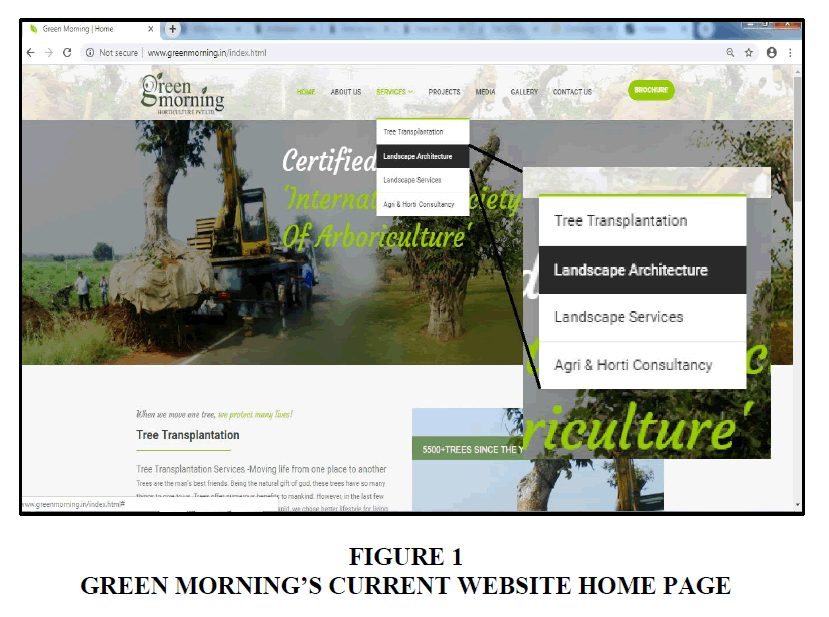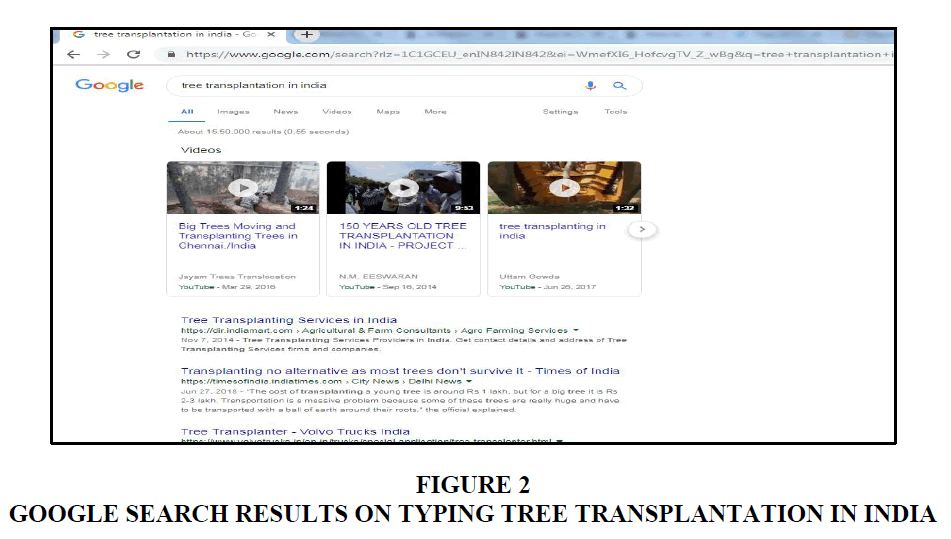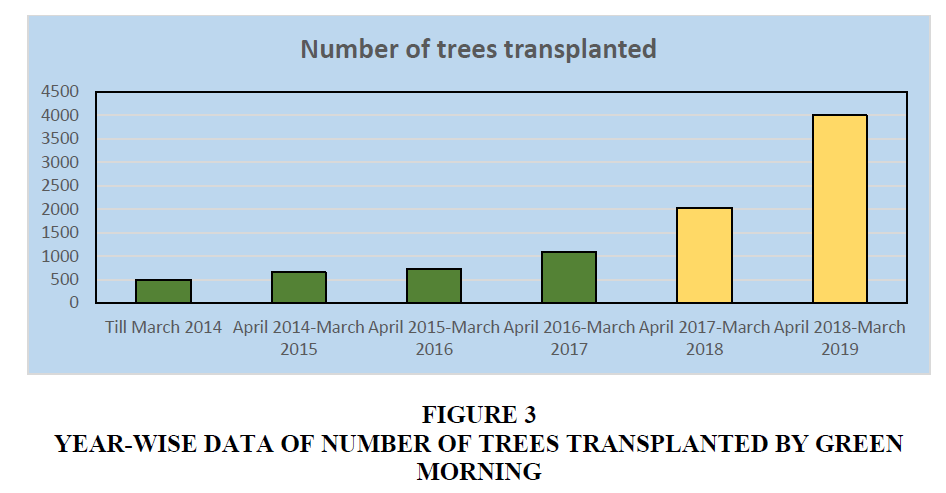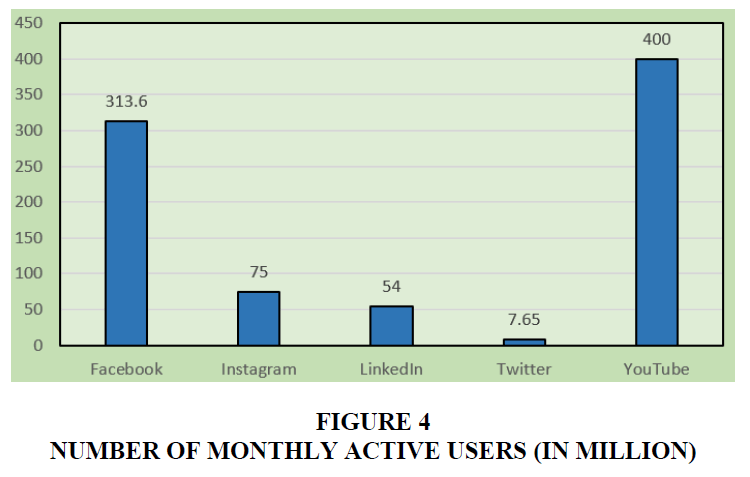Case Reports: 2021 Vol: 25 Issue: 1
Green Morning: Casting Social Media Strategy for Sustainable Business Growth
Gargi Rawat, Scholar, Indian Institute of Management, Lucknow
Prem Prakash Dewani, Associate Professor, Indian Institute of Management, Lucknow
Abstract
This case examines the digital media strategy of a growing enterprise named Green Morning, a tree transplantation firm. This industry is at a nascent stage of development with small and scattered players all over the country. Green Morning, a prominent name in this industry, bags most of its projects from infrastructure and development projects undertaken by the government. With the increasing awareness of transplantation as an option of saving green cover of the nation, competition is rapidly increasing. The firm, now, wishes to utilize digital platforms to strengthen its communication strategy, and build a strong brand name in order to retain its leading position in the industry. The case will give students an opportunity to understand the role of digital media platforms in building an effective marketing strategy for small and medium enterprises.
Keywords
Sustainable Business Growth, Social Media Marketing Strategy.
Introduction
In March, 2019, SIDBI, Small Industries Development Bank of India, conducted a 15 days training programme for upcoming entrepreneurs in collaboration with Indian Institute of Management- Lucknow, a leading b-school in India. Under this programme, each enterprise was represented by one of its founding members. They were given an opportunity to discuss their business problems with other participants and reputed academicians. The partakers had to present their core business, achievements, shortcoming, and future growth plans. Mr. Appari, Founder and MD of Green Morning was also one of the participants in this event.
Late in the evening of 6th March, 2019 Mr. Appari was preparing for the presentation and pondered where he would wish to see his business few years from then. He had been enjoying a leading position in the transplantation industry for the last two years and had bagged several major government development projects to his name. His firm, Green Morning, feels proud to have successfully transplanted 9000 trees across India with a commendable and unbeatable survival rate of 85%. His journey to this day has not been an easy one. Trial and error, continuous research, and tireless persuasion of the concerned authorities helped him in growing the transplantation industry in India.
He always felt satisfied with the growth that Green Morning had achieved in the past few years but the increasing competition in the industry worried him. He realized that if he does not take any major step to address this, he might lose his current position in the market. Contemplating the same, a worrisome look flashed on his face. Brushing this aside, he calmed his nerves and started preparing for the presentation due next day.
Transplantation
Tree transplantation is the technique of unearthing trees from one location and replanting it to a different location. It is majorly done for the purpose of saving lives of full-grown trees while some may use it for beatification and artistic purposes. There are three ways in which tree transplantation can be executed namely, ball-and-burlap method, bare-root method, and mechanical method. The first two methods are manually executed and involves heavy investment in labour whereas the mechanical methods make use of a machine called tree spades.
In India, the ball-and-burlap method is commonly adopted transplantation technique because of its unique geographical constraints. The method includes six steps which start with the investigation of trees and their roots, soil testing and replantation site selection. Next, the trees are prepared for transplantation by the process of disinfection and pruning. Extraction is then executed with the help of labour, earth movers and cranes. The roots of these extracted trees are treated with suitable chemicals, insecticides, and pesticides before burlapping them with jute sheets. After taking these measures, the trees are securely transported and replanted at the relocation site. The whole process takes 15-20 days for completion along with further maintenance of up to 1 year to ensure the survival of these trees.
Transplantaion Industry in India
The transplantation industry is underexplored in India with only a few prominent players that are limited to their geographic regions. However, with continuously increasing number of infrastructure and development projects, the scope of transplantation industry in India is growing. Companies such as Green Morning in Hyderabad, Rohit Nursery in Delhi (NCR), Jeyam Landscape in Chennai, Vruksha in Bengaluru are some of the key players in the Indian market. Each firm has an experience of handling at least one metro rail project being undertaken in their respective regions. Apart from these firms that execute the transplantation process using traditional methods, another upcoming player in this industry is VOLVO Trucks India. This firm manufactures tree spades which is capable of implementing the whole transplantation process using single machine. Table 1 displays the projects/number of trees saved, in the last few years, by the respective firms.
| Table 1 Competitive Scenario of Tree Transplantation Industry in India | ||
| Transplantation firm | Projects undertaken | Number of trees saved |
| Green Morning | Hyderbad Metro, Pune Metro, Forest department of Telangana, AP,and Odissha, CPWD- Delhi, Road widening in Hyderabad | 9000 |
| Volvo Trucks India | Govt. projects in Jharkhand, Chattisgharh, Karnataka | 3000 |
| Tree Machine, Gujrat Govt. (Done with help of machinery imported from GSPC, USA) |
Forest Department, Gujrat Govt. | 1500 |
| Jeyam Landscape & Garden consultants | Commercial projects from firms like Infosys, Wipro, Chennai Metro, BPCL | 900 |
| Rohit Nursery | Delhi Metro, IIT Delhi campus, Commonwealth Games, Badarpur Flyover, Nauroji Nagar | 450 |
Background of Green Morning
A company incorporated in Feb, 2010, Green Morning is the brainchild of Mr. Ramachandra Appari, an entomologist. Based in the city of Nizams, Hyderabad, the company has knowledge and experience of transplanting 93 different species of trees like banyan, ficus, palm, etc. and has successfully transplanted over 9000 trees across the country. The company attracts its major business from Government of various states in India, Indian Army, corporate construction projects, and individual villas and apartment builders.
In the initial period, the business explored various avenues like establishing a nursery with innovative projects like gift a plant, selling plants of religious importance, agriculture and horticulture consultancy, and landscape architecture and services. In the late 2009, Mr. Appari witnessed the construction of Hyderabad-Vijaywada highway. This highway was being built on a path which was once filled with lush green canopies that were now being razed to the ground. Mr. Appari, an environmentalist at heart, was troubled by this sight and decided to take a step towards this matter. He conducted primary and secondary research to find a solution for saving full-grown trees. At first, Mr. Appari gathered knowledge about this process from the research done in the area. Apart from the literature, various video platforms available on the internet also helped him in having an extensive and exhaustive view. Transplantation seemed to be an appropriate and feasible answer to this situation. He commenced with a few test projects at a construction site in Hyderabad to have a practical experience in the field.
In 2010, they were successful enough to scale to a commercial level by undertaking transplantation projects in the construction of a hospital, expansion of a farmhouse, etc. which involved a maximum of 10-30 trees each. Further, in 2011, Hyderabad Metro Rail project was proposed which required chopping of approximately 600 trees. Various environmentalists resisted the construction of this project unless the government ensured survival of these trees. The company found this as a good opportunity to expand as it had both the knowledge and experience of the business by this time. Along with four other landscapers, Green Morning successfully completed the transplantation of 600 trees with a survival rate of 90%. This project assured Green Morning that they were moving in the right direction and that they had the potential to make a considerable impact to counter the reducing green cover of the planet.
Roadblocks in Green Morning’s Development
The firm enjoyed a little success after the Hyderabad Metro Rail project, but its team still faced difficulties in convincing the government and other concerned authorities about the believability of transplantation. Mr. Appari approached various forest department officials with proposal to save trees but to his dismay, the officials seemed sceptical of the proposition and thought of it as a scam. Banyan and ficus were believed to be the only two transplantable species, according to their limited knowledge. Also, the authorities that did believe in his business did not have any projects at the moment. This lack of awareness and knowledge about the field hindered Green Morning to reach its full potential. The business from 2011-2016 remained constant with approximately 1000 trees per year. From the year 2013 to 2016 independent houses and commercial construction sites contributed around 80% to transplantation revenue while the remaining share was contributed by the government projects.
Social Media and Green Morning
In Feb, 2017 a Facebook page called “The Better India” published an article on Green Morning’s efforts towards saving trees through the process of transplantation. The article talked about Mr. Appari’s outlook on environment conservation, the success his firm achieved in Hyderabad Metro rail project and the journey hence forth. This rendered the firm much needed publicity necessary for creating awareness and knowledge about the transplantation industry. The article clearly mentions that Mr. Appari had successfully transplanted 5000 trees in a period of 5 years. Many other media publications picked up on this story after the appearance of this article. This created a ripple effect and many other media channels like AlJazeera, leading newspapers like Indian Express, Navbharat Times, Deccan Chronicle and Telangana Today, and blogs like Yourstory also featured his initiatives soon after.
Since its inception in 2009, Green Morning had transplanted a total of 9000 trees, of which 33% were done before March 2017. While, the firm transplanted the remaining 66% in just a span of two years. Mr. Appari states that the apparent reason for this was the articles published across various media channels about his firm and the transplantation industry in general.
Future Growth
Green Morning has handled tree transplantation projects in various cities of India. Projects undertaken include Mumbai metro rail (7000 trees), Odisha development (3500 trees), bullet train (40,000 trees) and Pune metro rail (193 trees). These numbers are representative of Green Morning’s growing success and future potential. The founders of this venture quoted, “India is a growing country and as long as there are development projects, trees will be sacrificed at its cost for a better standard of living. We want to be there to save each and every tree, and want to position our company in a way that when someone thinks of protecting trees, they think of Green Morning”. Of all the business ventures that Green Morning explored like landscaping, nursery, organic plantation; transplantation was the one that struck a chord in its founders’ hearts. Besides the passion for it, transplantation also generated encouraging revenues to continue undertaking one project after another. Hence, the company took a strategic move of opting out of every other business avenue and made transplantation their core business.
Current Situation
Mr. Appari talked about this journey in the SIDBI programme and discussed the future growth plans with other participants and academicians. He also mentioned that his initial success was stimulated by the article published in 2017, listening to which a few participants pointed out his inability to leverage from the social media attention that his firm received. To form “Green Morning” a brand in the transplantation industry, the academicians suggested him to explore various digital marketing platforms in order to expand the business and gain an edge over the competition. They believed that a small business like his could make huge returns with small investments made toward these marketing efforts.
After returning from the programme, Mr. Appari was in talks with Mr. Sarat Babu, Chairman of Green Morning, and his core management team in their Hyderabad headquarters. He discussed about future growth plans and meeting the target of transplanting x trees by the year 2020. Currently, the firm is handling an important metro rail project in Pune but the lingering thought of competition still worried Mr. Appari. He had asked his team to focus and build a new digital marketing strategy to increase the visibility and awareness of the firm and also, the transplantation industry at large. He felt that an investment in a dedicated marketing team was the need of the hour.
Digital Media Platforms Under Consideration
Green Morning is a small business with limited budget to spend on a dedicated marketing team. Marketing through digital media seemed to be a viable option for the firm bearing in mind the constraints in resources. Hence, it was considering to invest in a digital media strategy with objectives of increasing recognition and customer engagement, which resultantly should lead in brand resonance of the firm. The core management team proposed three choices for the same, namely, search engine optimization, social media marketing, and development of a mobile application.
Search Engine Optimization
Green Morning’s management team was in thoughts of investing in search engine optimization (SEO) and revamping their website. SEO is a collection of tools and practices that helps a website rank higher in search engine results, thereby driving more traffic to the site and potentially more business. SEO is a widely accepted marketing technique used by small businesses that involves lower cost as compared to traditional marketing methods. One can also measure its effectiveness using simple techniques like Google Analytics.
SEO seemed to be a viable marketing option for Green Morning’s growth as it did not involve huge investment as compared to its traditional marketing alternatives. Along with this, the firm needed to renovate its current website by updating its content and making it mobile friendly. The website still informed about its old business avenues like landscaping, organic plantation, etc., which the firm has opted out of, approximately a year ago, which can be seen Figure 1. This confused the customer and also gave a blurred positioning to the firm.
SEO would also help in achieving better ranking of the Green Morning’s website on search engine’s results pages. Figure 2 shows the current pages that pop up on Google when someone types “transplantation in India”. Green Morning’s website does not pop up in the first page of the search results while its competitors like Volvo Trucks India and Jeyam Landscapes appear in the third and fifth ranks respectively.
Social Media Marketing
Mr. Appari and his team realized that they missed an opportunity of leveraging this social media attention. Table 2 showcases the number of trees transplanted by Green Morning in the last six years and its average growth rate. Hence, investing in increasing the visibility of Green Morning on various social media platforms is another option the Mr. Appari wishes to explore.
| Table 2 Number of Trees Transplanted | ||
| Year | Number of trees transplanted | Growth rate |
| Untill March 2014 | 500 | |
| April 2014-March 2015 | 650 | 30.00 |
| April 2015-March 2016 | 723 | 11.23 |
| April 2016-March 2017 | 1091 | 50.90 |
| April 2017-March 2018 | 2034 | 86.43 |
| April 2018-March 2019 | 4002 | 96.76 |
| Total number of trees transplanted | 9000 | |
| Average growth rate | 55.06 | |
After discussion with his management team, various social media platforms like Facebook, Instagram, Twitter, YouTube, Google+, and LinkedIn were being considered to showcase Green Morning’s journey, future efforts towards environment conservation, and build relationships with prospective customers. Using social media as a marketing tool is effective as it requires low investment in both capital, and technical expertise. It is easier to implement and involves lesser time and effort.
Small businesses, like Green Morning, might miss out on potential customers if social media is overlooked. According to a report by Statista, there are 326.1 million active users of social networking sites in India. Second only to China, India boasts of a huge user base of social media, making it one of the best markets for executing digital marketing strategies Table 2 and Figure 3, shows the number of MAU of the most prominent social networking sites in India for the year 2019. Facebook is most widely used social networking site in India with will be approximately 314 million monthly active users (MAU). It can be used to share any kind of kind about the company, be it photos, videos, company updates, upcoming events and projects, financial growth, etc. From fun posts to serious news, every kind of information is accepted by the users of this platform. Green Morning can use Facebook to increase awareness about transplantation, gain fan following, and engage with society at large. Eventually, this will help in increasing the brand awareness of the firm.
Instagram, a mobile based app, is gaining popularity among the youth of the nation. It is used to share fun and lively visual content in the form of photos, snippets, and videos. Businesses with a niche market having a social objective or artistic products and services tend to do well on this platform, by making an emotional connection with its users. Green Morning can make of use of this platform to educate users about transplantation by sharing photographs and videos of the projects undertaken.
Twitter is a platform that allows its users to share updates, serious news, and links to blogs. Since this SNS makes use of concise messages of not more than 240 characters, firms usually use it to prompt discussions about its campaigns and initiatives. Green Morning can utilize this platform to humanize the brand and interact with its stakeholders. The firm can also initiate discussions on topics related to transplantation. Furthermore, Twitter hashtags can be used to popularize tree transplantation, and build strong association of this terminology with the firm in table 3 and figure 4.
| Table 3 Number of Monthly Active Users in Various Social Networking Sites by 2019 | |
| Social Media Platform | Number of monthly active users (in million) |
| 313.6 | |
| 75 | |
| 54 | |
| 7.65 | |
| YouTube | 225 (in 2018) |
YouTube, a platform that allows people to upload and watch videos, is the second most popular social networking website. Having a far-reaching viewership and a widespread network of 225 million people in India, firms generally use it for communication, education and entertainment purposes. Furthermore, YouTube is also a widely used search engine, second only to Google. Green Morning can capitalize this platform by uploading interesting video-based content related to transplantation process, its advantages, and current scenario in India. Videos exhibiting the transplantation process, showcasing before-after images, and interviews of the customers and supporters might be an attractive content for environment enthusiasts.
LinkedIn is a social networking platform, generally used for generating employment and establishing business relationships. Lead generation, customer engagement, and talent recruitment are some of the benefits that this platform provides to businesses. Green Morning can think of introducing a LinkedIn page for endorsement activities and increasing the firm’s visibility. Mr. Appari may position himself as transplantation industry expert by continuous sharing of relevant information and solving queries of related customers.
APP Development Conclusion
Mr. Appari and his team also considered the idea of developing a user-friendly app that will provide platform for connecting with his target audience. The firm received major portion of its revenues from independent houses and construction sites in its initial years. However, with the increasing awareness about transplantation, government became a major source of revenue to the firm in the last few years. They felt that they were losing business from independent houses and construction sites by focusing entirely on government projects. Green Morning had a strong conviction that there was huge scope to expand in this neglected segment, and if not done within the span of two years, competition might capture it.
The app was meant to automate the process of client registration, easy and hassle-free transactions (as India is moving towards a cashless economy), and provide a database for existing and new clients. The aim was to standardize the process of customer acquisition and payment systems. Furthermore, the app also had potential of reaching and acquiring a vast number of potential customers, eventually helping the firm in growing and strengthening its network.
The following question had to be addressed before implementing any action plan for the future. Should Green Morning actually be investing in digital marketing in order to increase awareness about themselves and their industry? If yes, what social media platform are deemed necessary to be explored? What type of content should be published on different social media platforms, i.e., should the communication be digital platform specific? Is there a need to hire a dedicated workforce for this purpose? Lastly, what measures are required to assess the effectiveness of this strategy?
References
- https://www.dnaindia.com/mumbai/report-mumbai-nagpur-super-expressway-likely-to-claim-2-lakh-trees-2603841
- https://www.tribuneindia.com/news/punjab/20-000-trees-being-axed-along-ropar-phagwara-highway/424376.html
- https://indianexpress.com/article/india/nh22-road-widening-project-planted-144100-trees-against-cutting-of-12000-trees-himachal-told-ngt-kalka-shimla-highway-4902072/
- https://www.thehindubusinessline.com/economy/logistics/bullet-train-project-to-leave-no-stone-unturned-to-save-trees-on-route/article25405736.ece
- https://newsable.asianetnews.com/south/karnataka-cabinet-expansion-on-december-22-unlikely-here-is-why-pjbabx
- http://www.newindianexpress.com/cities/delhi/2018/aug/09/over-12000-trees-cut-in-delhi-for-various-government-projects-in-last-three-years-1855616.html
- https://timesofindia.indiatimes.com/city/delhi/1-lakh-trees-chopped-over-8-years-for-Metro-PWD-projects-in-Delhi/articleshow/46939104.cms
- https://www.timesnownews.com/mirror-now/civic-issues/article/10000-trees-chopped-sohna-road-gurugram-haryana-forest-department-widening-road-construction-flyover-nhai/269972
- https://timesofindia.indiatimes.com/city/mumbai/31000-trees-to-be-cut-to-widen-mumbai-goa-highway/articleshow/58465306.cms
- https://m.dailyhunt.in/news/india/english/yourstory-epaper-yourstory/youtube+monthly+user+base+touches+225+million+in+india+reaches+80+pc+of+internet+population-newsid-84384248
- https://www.indiatoday.in/mail-today/story/nbcc-transplants-150-trees-at-nauroji-nagar-but-smaller-ones-with-30-cm-girth-only-1269771-2018-06-26
- https://forests.gujarat.gov.in/tree-transplant.htm
- http://www.newindianexpress.com/nation/2018/dec/04/volvo-trucks-to-make-tree-transplantation-go-hi-tech-1906862.html\
- https://www.prontomarketing.com/blog/seo-and-your-digital-marketing-strategy/
- https://www.statista.com/Photos
- https://www.indiamart.com/proddetail/tree-transplantation-9920211412.html
- https://www.youtube.com/watch?v=wIe7TmNC1ys



